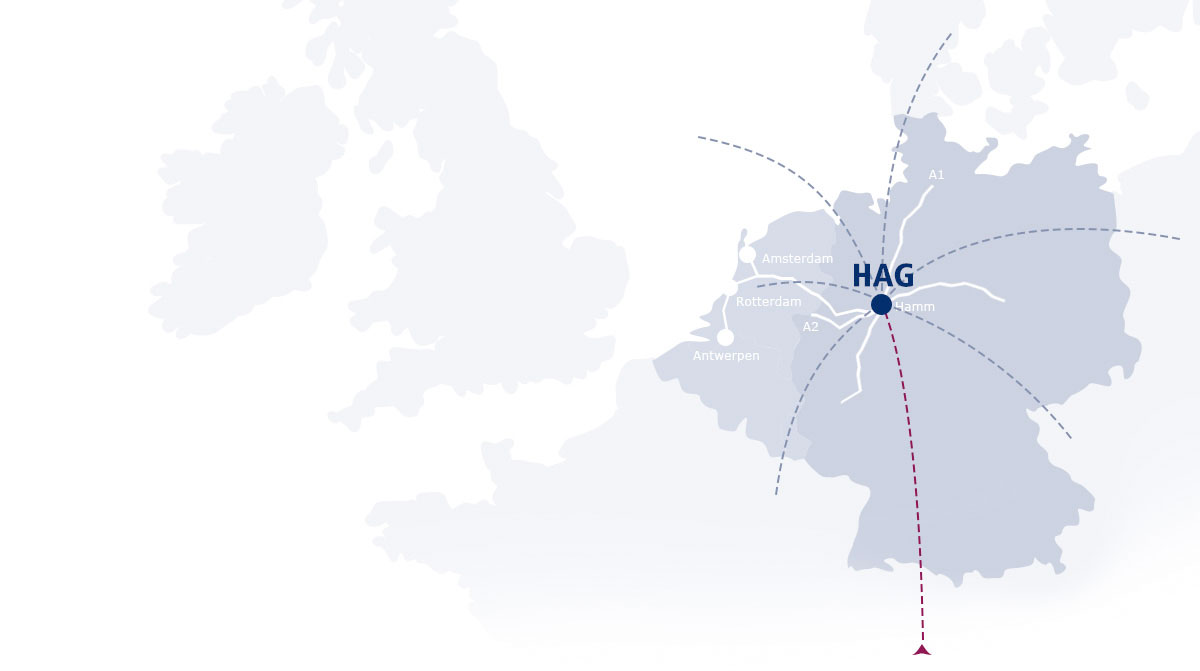OUR HISTORY
SUCCESS WITH STRONG ROOTS
How it started …
As a young company for the trade and processing of minerals, especially chrome ore sand, HAG has common roots with the Hamm mineral mill.
Founded in 1961 by Karl Voss, the mineral mill can look back on a long success story. In the constantly growing mills, mineral raw materials from all over the world are processed in an amount of up to 230,000 t/year.
Since 2006, the Hamm mineral mill has been ISO 9001 certified.
2009
Construction of new plant for the processing of Chromerzsand
2012
Separation of the Chromerzsand division into an independent company: HAG Trading and Processing Company for Minerals mbH. Managing Director: Stefan Frevel and Christian Frevel.
Construction of a new office building for THE HAG.
2013
New storage capacities of up to 10,000 t.
FACTS AND FIGURES
MAXIMUM PERFORMANCE IN 2 LAYERS
Storage capacity for more than 40,000 t
Today, HAG employs 9 people who can produce up to 100,000 t per year in shifts.
Our treatment plant has a state-of-the-art fluidised bed dryer, as well as a modern screening machine. In addition, we have several silos in which approx. 1,000 t of finished goods can be stored permanently.
The HAG has a total operating area of 30,000 m2, of which 20,000 m2 are used for the storage of the raw material and 4,000 m2 of covered storage space for the packaged goods in big bags, as well as in paper bags.

- HAG Verwaltung
- Aufbereitungsanlage
- Aufbereitungsanlage
- Aufbereitungsanlage – Förderband zum Fließbetttrockner
- Lagerhalle – BigBags
- Kai – Anlieferung Rohmaterial
- Kai – Anlieferung Rohmaterial
- Kai – Anlieferung Rohmaterial
- Kai – Anlieferung Rohmaterial

HAG and MMW aerial view
TRANSPORTS AND WEGE
WELL CONNECTED ON THE ROAD AND TO WATER
ON LAND AND AT WATER
Due to our location in the port in Hamm, the most transshipping pure canal port in Europe, we have a very good logistical connection to the main European overseas ports in Rotterdam, Antwerp and Amsterdam:via the Dutch waterway network, the Rhine, the Wesel-Datteln- and the Datteln-Hamm Canal reach us from there raw materials from all over the world.
The journey time of an inland waterway vessel from the seaports to Hamm is about 1.5 days at a distance of about 300 km.
But we are also excellently accessible by road.
The Hamm mineral mill is conveniently located on the main arteries A1 and A2 for optimal connections in all four directions.










